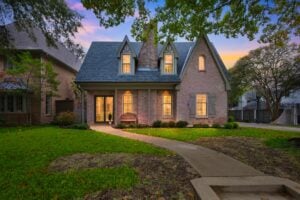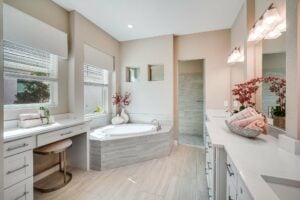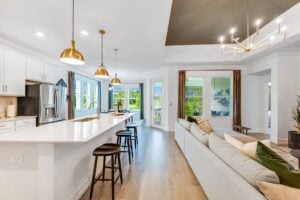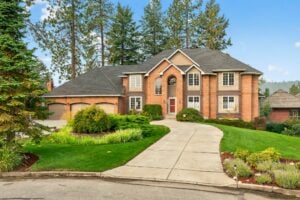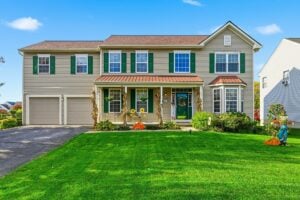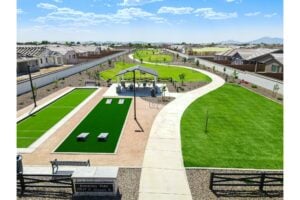Crafting a real estate photography portfolio that grabs attention is all about choosing the right layout. Here’s what you need to know:
- Grid Layouts: Perfect for displaying multiple property photos at once. Clean, organized, and mobile-friendly.
- Full-Width Layouts: Great for bold, dramatic presentations. Ideal for showcasing large spaces or architectural details.
- Mixed Layouts: Combines grid and full-width styles for a dynamic, balanced look. Works well with HD photos, aerial shots, and virtual tours.
Quick Comparison:
| Layout Type | Best For | Key Features |
|---|---|---|
| Grid Layout | Multiple listings, quick comparisons | Organized, mobile-friendly |
| Full-Width | High-end properties, immersive experience | Bold visuals, detailed presentation |
| Mixed Layout | Varied media types, storytelling | Dynamic, flexible design |
Each layout has its strengths depending on the property type, audience, and browsing habits. Choose one that highlights the property’s best features while ensuring usability on all devices.
Web Design & Portfolio Tips for Real Estate Photography & …
1. Grid Layouts
Grid layouts arrange images in neat, evenly spaced cells, creating a polished and organized look. This setup allows potential buyers to browse property photos easily and follow a logical flow – for example, starting with exterior shots and then moving to interior images.
Modern grid layouts automatically adjust to fit different screen sizes. On larger screens, they display multiple columns, while on smaller devices, they shift to a single-column format. This ensures a smooth viewing experience on desktops, tablets, and smartphones.
To make the most of a grid layout, focus on content hierarchy. Highlight a property’s key features by featuring standout images prominently. Using high-quality, consistently sized photos is crucial for effective Real Estate Photography. Services like HomeJab provide professional Real Estate Photography with standardized image dimensions, typically delivered within 24–48 hours, making it simple to create a clean and visually appealing grid.
“The photos turned out absolutely fantastic – crisp, professional, and beautifully lit. The quality exceeded expectations, and the attention to detail was evident in every shot.” – Liz Zeng [1]
Up next, we’ll dive into full-width layouts and their role in showcasing properties effectively.
2. Full-Width Layouts
Full-width layouts showcase photos at their maximum size, offering an immersive way to highlight property details. Features like smart scaling and easy-to-use navigation make this format even more engaging.
These layouts display one image at a time, spanning the entire width of the browser. This approach is ideal for emphasizing architectural elements, spacious interiors, or eye-catching aerial views. The larger view allows potential buyers to notice finer details, such as crown molding, custom fixtures, or detailed landscaping – details that may be missed in grid layouts.
Because this format magnifies everything, high-quality images are a must. Professional photographers often use 4K (3840 x 2160) or higher resolutions to ensure sharpness, even on large screens.
To get the most out of full-width layouts, consider these tips:
- Smart scaling: Images should automatically adjust to fit various screen sizes while keeping their proportions intact and navigation touch-friendly.
- Intuitive navigation: Include clear previous/next controls and smooth transitions to make browsing effortless.
- Quick loading: Use progressive image loading to reduce delays, especially for users with slower internet connections.
- Context preservation: Keep property details and descriptions accessible while users browse the photos.
The main benefit of full-width layouts is their ability to create a gallery-like experience, similar to an in-person property tour. Viewers can focus on each room or feature individually, helping them imagine themselves in the space.
| Layout Feature | Impact on Property Presentation |
|---|---|
| Image Size | Highlights property details and craftsmanship |
| Navigation | Offers a focused, step-by-step viewing experience |
| Mobile Display | Requires responsive design for smaller devices |
| Loading Speed | Needs optimization for handling large image files |
| Visual Impact | Delivers an immersive, gallery-like presentation |
The success of full-width layouts hinges on the quality of your images. Partnering with professional real estate photographers ensures your photos meet the technical standards for this format while showcasing the property’s best features.
3. Mixed Layout Options
Mixed layouts combine full-width hero images with structured grids, creating an appealing visual flow that emphasizes key property features. Typically, these layouts begin with a full-width image – often an HDR exterior or aerial shot – to grab attention. This is followed by a grid showcasing interior photos, floor plans, and 3D virtual tours.
What makes mixed layouts effective is their balance between striking visuals and organized content. By keeping bold imagery separate from detailed information, these designs make it easier for users to navigate while presenting a clear story for each property.
For real estate professionals looking to create standout portfolios, mixed layouts are a smart choice. Platforms like HomeJab demonstrate how using high-quality HDR photos, aerial views, and interactive content can enhance the property browsing experience.
This design approach provides a strong foundation for evaluating the pros and cons of different layout styles.
Layout Strengths and Limitations
Choosing the right portfolio layout for real estate photography can make a big difference in how properties are showcased. Each layout type has its own strengths and challenges when it comes to visual appeal, navigation, and how well it works on mobile devices.
Here’s a quick comparison of the main layout types:
| Layout Type | Visual Impact | Navigation | Mobile Performance |
|---|---|---|---|
| Grid Layout | Clean and organized; consistent image sizes | Easy to browse; simple filtering | Quick to load; adjusts well; minimal scrolling |
| Full-Width | Bold and dramatic; immersive presentation | Clear and linear flow; focused attention | May load slower; vertical scrolling required |
| Mixed Layout | Dynamic and balanced; flexible design | Natural flow; engaging exploration | Moderate load times; adaptive to devices |
This table highlights the trade-offs for each option, helping you weigh the pros and cons.
For portfolios with a large number of properties, grid layouts are ideal. They provide a structured, easy-to-navigate format that allows users to quickly scan and compare listings. On the other hand, full-width layouts are perfect for creating an immersive experience, making them great for showcasing high-end or standout properties.
Mixed layouts bring together the best of both worlds. They work well when combining different types of media, such as HDR photos, aerial images, or virtual tours, into a cohesive presentation.
When deciding on a layout, consider factors like image quality, your audience’s browsing habits, the number of properties you’re showcasing, and available bandwidth. The goal is to create a design that looks great on both desktop and mobile, ensuring usability and visual appeal go hand in hand.
Conclusion
The analysis above underscores how layout choices can shape property presentation. Selecting the right portfolio layout can make a noticeable difference in how properties are perceived.
Whether you go with a grid for a clean and organized look, full-width for an immersive experience, or a mixed layout for flexibility, each option affects user experience and how properties are showcased. Grid layouts are great for showcasing multiple properties, making them ideal for agencies with extensive listings. Full-width layouts work well for creating a striking visual impact, especially for luxury properties. Mixed layouts shine when using a variety of media like HDR photography, aerial images, and virtual tours.
When deciding on a layout, keep these factors in mind:
- Property Type: Align the layout with your target market and audience.
- Image Quality: Ensure the layout supports high-resolution images.
- Loading Speed: Make sure the design performs well on all devices.
- Content Updates: Opt for layouts that allow easy updates to keep your portfolio fresh.





